Dummy load with a 50 Ω stripline (hybrid) resistor.
![]() 15-04-2013 With een second example of a construction.
15-04-2013 With een second example of a construction.
|
A homebrew 50 Ω 150 Watt dummy load. |
50 Ω DUMMY LOAD
Making a dummy load working well into the UHF region is pretty straightforward if one can obtain a 'stripline' or 'hybrid' resistor. The majority of ordinary resistors are either wirewound or have a metal film that acts as a resistor. These have some inductance resulting in bad SWR. They may just work on 160 meters but not on VHF/UHF.
STRIPLINE (OR 'HYBRID') RESISTOR.
Thick film resistors (e.g. made from aluminium nitride ceramics) exists in many shapes and power ratings e.g. (left to right in picture): 50 Ω/250 Watt, 50 Ω/150 Watt, and 50 Ω/25 Watt. These do exist in different values, most common are 100 Ω and 200 Ω. These are frequently used in combiners of the amplifiers in cellphone towers.
|
|
|
|
|
|
RFP 50R/250W |
RFP 50R/250W |
RF Florida-Labs 50R/250W |
RF Florida-Labs v50R/350W |
|
0 - 500 MHz (500 MHz SWR < 1.3), continue 800 W on a suited heathsink (1500 W PEP short period) |
Regularly 150 Watt and 250 Watt 50 Ω resistors are offered on hamfests and eBay. Normally these are a ceramic disc attached to a silvered copper-mounting strip. If the resistor has one tab then this mounting strip is the other leg of the resistor. This makes it possible to make all connections coaxial and very short, thereby reducing the inductance and capacitance. The thin gold plated tab needs to be connected in such a way that it will allow for expansion when the resistor heats up.
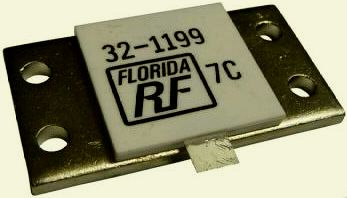
Shaping it into a 'U' figure if the tab is still long enough.
One thing to remember is that one tighten the screws on a transistor or a hybrid resistor far too much. Doing so will distort the heatsink resulting in a bad thermal connection between the heatsink and the component. Please refer to manufacturers specifications for the right torque.
EXCESSIVE DRIVE
It is my experience that a stripline resistor cannot handle excessive voltages in contrast to ordinary resistors. This means that a 150-Watt resistor should not be exposed to a peak voltage that is higher than approx. 120 Volt
MOUNTING
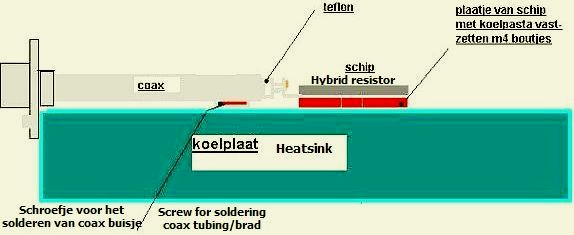
It is interesting to discover that independently of each other a number of hams have come up with an almost the same way of making a dummy load. The picture by PA0KBT hardly needs an explanation.
|
|
Ready made system found on a hamfest. |
|
In the pictures above one can see how a 150-Watt dummy load was made. The ready made N-connector with attached coaxial connection made construction real simple. Build in this way it will go up into the GHz range.
In contrast to the drawing made by PA0KBT the hybrid resistor was mounted in a way that minimised the length of the earth connection between coax and the mounting tab of the resistor.

If using coax with a solid centre make sure that («fig) the tag on the resistor can extract/expand when heating up, otherwise it will crack the resistor. Be careful bending/handling the tab because it is breaks easy.
It is simple to make something similar to the shown N connector using some coax with Teflon (PTFE) insulation.
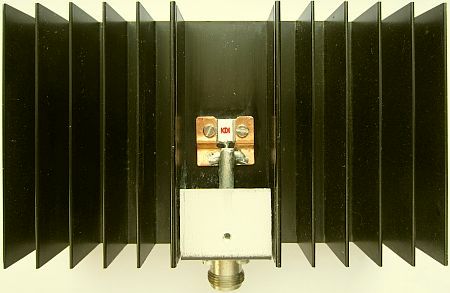

SWR/2m/70cm = 1.03.
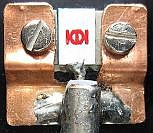
Here is another method to assemble the 150 W resistor induction free as possible. The standing wave ratio at 2 m and 70 cm were SWR/2m/70cm = 1.03. The heatsink is a smaller version than the below product, because I do not use it as a continuous load during experiments with 100 W transmitters.
COMMERCIAL PRODUCT
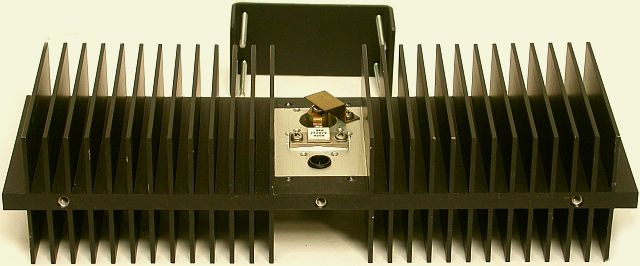
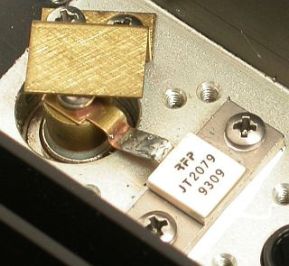
Cellwave's dummy load CL150 (150 W/1 GHz).
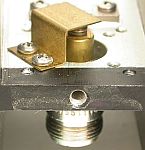
Here some photographs of a commercial 150 watt 1 GHz dummy load: the Cellwave 150 Watt CL150. It shows how the RF is prevented from leaking out and how a cover, the size of the hole through the heatsink and a Z-shaped 'cover' (fig») are maintaining a 50 Ohm impedance.
SERIAL-PARALLEL
|
Full size |
An attempt to make a decent 600 W/50 Ω dummy load («fig) by using 4 × 50 Ω/150 Watt resistors for HF failed. Even in the HF region the mounting of the resistors on a heatsink and using insulation washers gave too high a capacitance. Perhaps a better solution was installing the resistors in parallel and uses a balun for impedance transformation.
|
Full size |
There are resistors («fig) with two tabs and having the actual resistor isolated from the mounting tab. These are far more suitable for doing what I attempted.
WATT METER

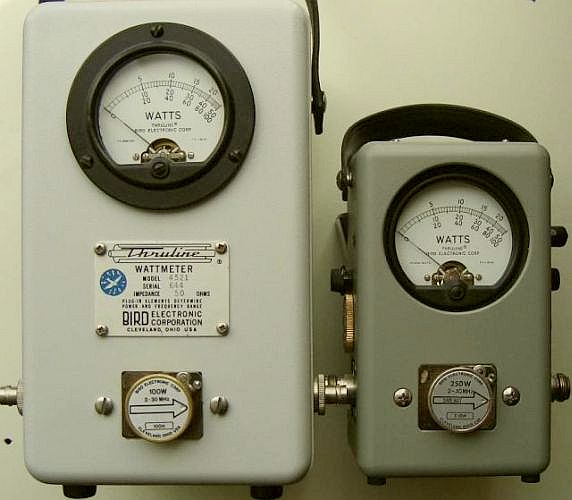
At the left a homebrew Bird clone with build in 150 Watt (hybrid) dummy load and at the right a genuine Bird 43.
A 19-inch rack had a Bird panel wattmeter, which was cannibalised to make a wattmeter with, build in dummy load. A large part of the much heavier Bird 43 clone is heatsink and this results that with coax connections it will move a lot less on my desk. As a result I am using this wattmeter a lot and the original Bird 43 is only used for the calibration of other equipment.
![]()